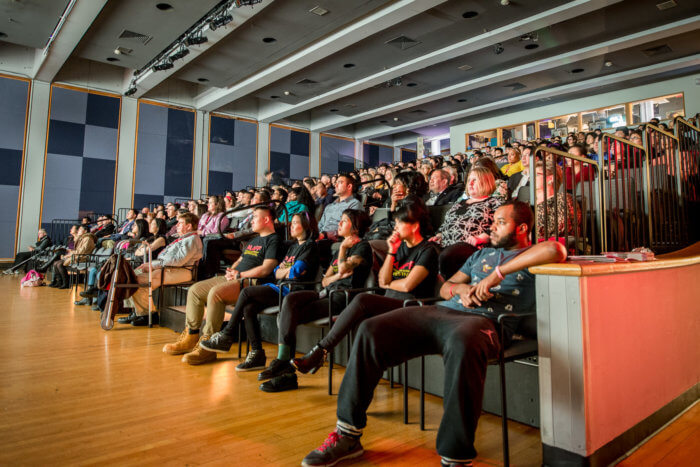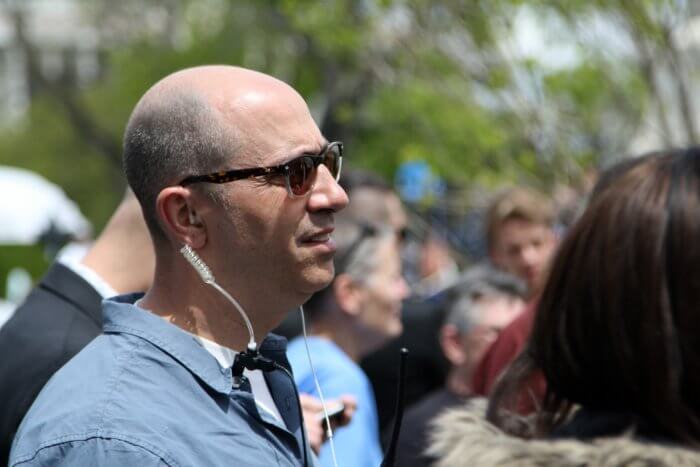As Hollywood emerged from the pandemic, its biggest film productions dipped in diversity after years of incremental progress, according to a new study by UCLA researchers. Opportunities were notably greater for women and people of color on streaming platforms than in theatrically released films.
The annual UCLA Hollywood Diversity Report, published Thursday, presented one of the most detailed looks yet at how the film industry was shaped and, in many ways, set back during the pandemic. In analyzing 2022 movie releases, academics found that ethnic and gender inclusivity in theatrical films reverted back to 2019 or 2018 levels in many metrics, turning charts downward that had been slowly trending toward greater equity on screen and behind the camera.
As the film industry sought to claw back moviegoers in 2022, it did so by leaning more on films starring and directed by white men, despite considerable evidence that more diverse films attract larger audiences. Black, Latino and Asian American moviegoers make up nearly half of all frequent moviegoers, and for the biggest hits, often account for the majority of ticket buyers.
The film industry was still recovering in 2022, releasing fewer wide releases and seeing the box office return to about 67% of pre-pandemic levels. Though the 2022 movie year ended in triumph for Asian American representation at the Academy Awards with the best picture-winning “Everything Everywhere All at Once,” researchers see a potential turning point where opportunity for women and people of color is usually reserved for lower-budgeted streaming movies.
“It definitely was not an industry that was back all the way. But I really think it gives a picture of a two-tiered system that’s been created,” says Ana-Christina Ramón, director of the Entertainment and Media Research Initiative at UCLA, which produces the report. “What will be interesting to see is what happens in 2023 if it continues to have this bifurcation.”
“The fear is that diversity is something is temporary or could be easily cut at any point in either theatrical or streaming,” says Ramón, noting that streaming services, after years of torrid growth, are now pulling back on original productions.
In theatrical releases, people of color accounted for 22% of lead actors, 17% of directors and 12% of writers. Women were 39% of lead actors and 15% of directors. While roughly double the percentages of a decade ago, the numbers are closer to those of five years ago, and still easily trail U.S. population demographics. Women have made gains in writing, composing 27% of writers in 2022 theatrical releases, up from 17% in 2019. Yet only one woman of color penned a top theatrical film in 2022.
At the same time, streaming releases are more inclusive, accounting for more films with diverse casts and more female leads. Sixty-four percent of original streaming releases in 2022 had casts that were more than 30% non-white, as opposed to 57% of theatrical releases. About a third of leads in top streaming films went to people of color — nearly 12% more than in theatrical films but still about 10% below population demographics. Leads for women in streaming films (49%) nearly reached parity with men in 2022.
But by considering budget levels, which tend to be higher in theatrical releases, researchers found some of the greatest disparities. Studios are overwhelmingly choosing white male directors for their biggest productions. They accounted for 73% of film directors in theatrical release, in films that usually (60%) had a budget above $30 million.
Budgets tended to be lower for female filmmakers and directors of color. Films directed by white women were usually (56%) budgeted less than $20 million. For directors of color, 76% of their streaming films had budgets below $20 million.
“With the industry unstable, what we could see was the culture that Hollywood has always relied on when in need of a surefire hit,” says Ramón. “They think of surefire hits as a code for no diversity, for white-led. It’s something that they’re comfortable with.”
































